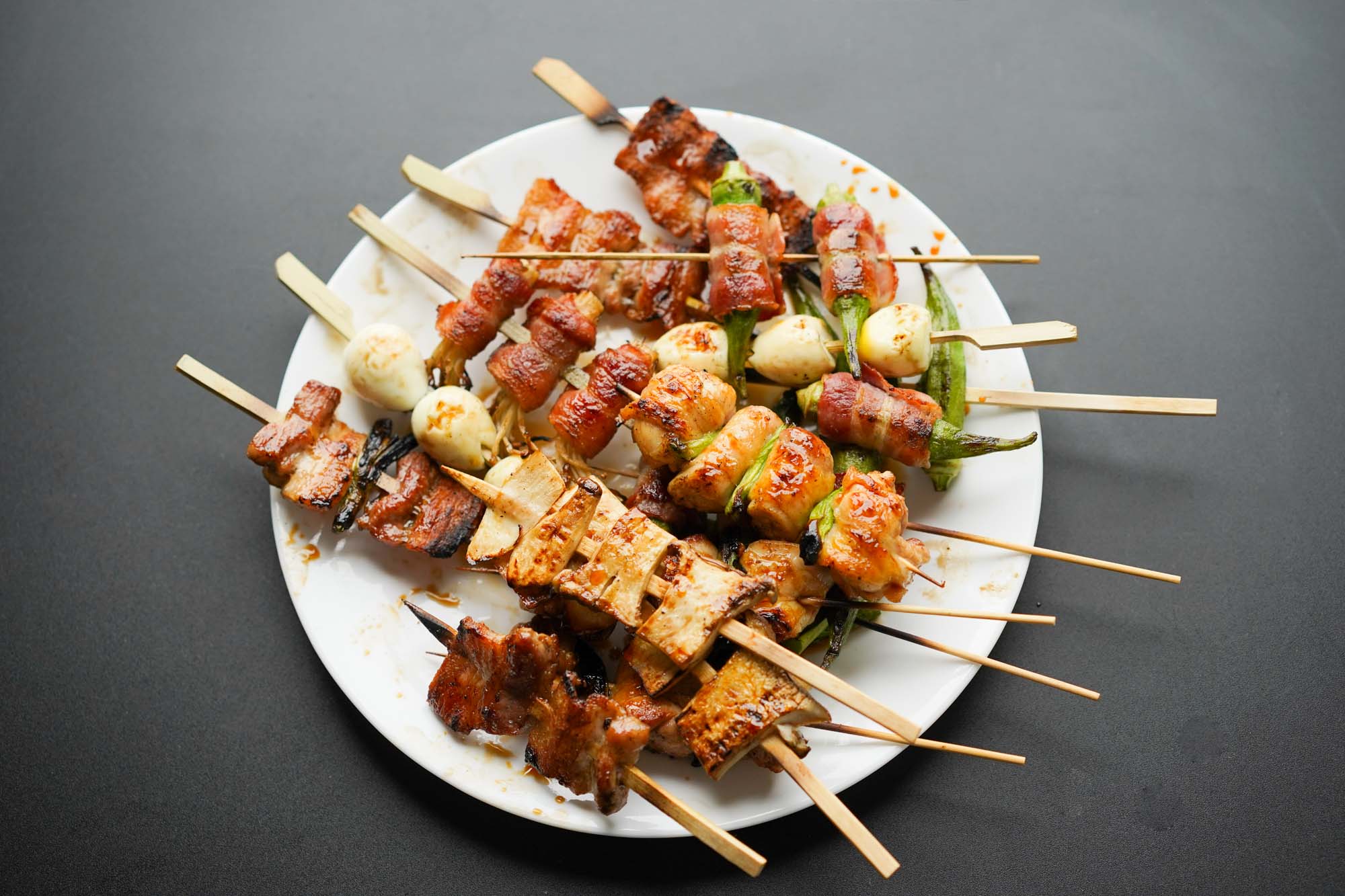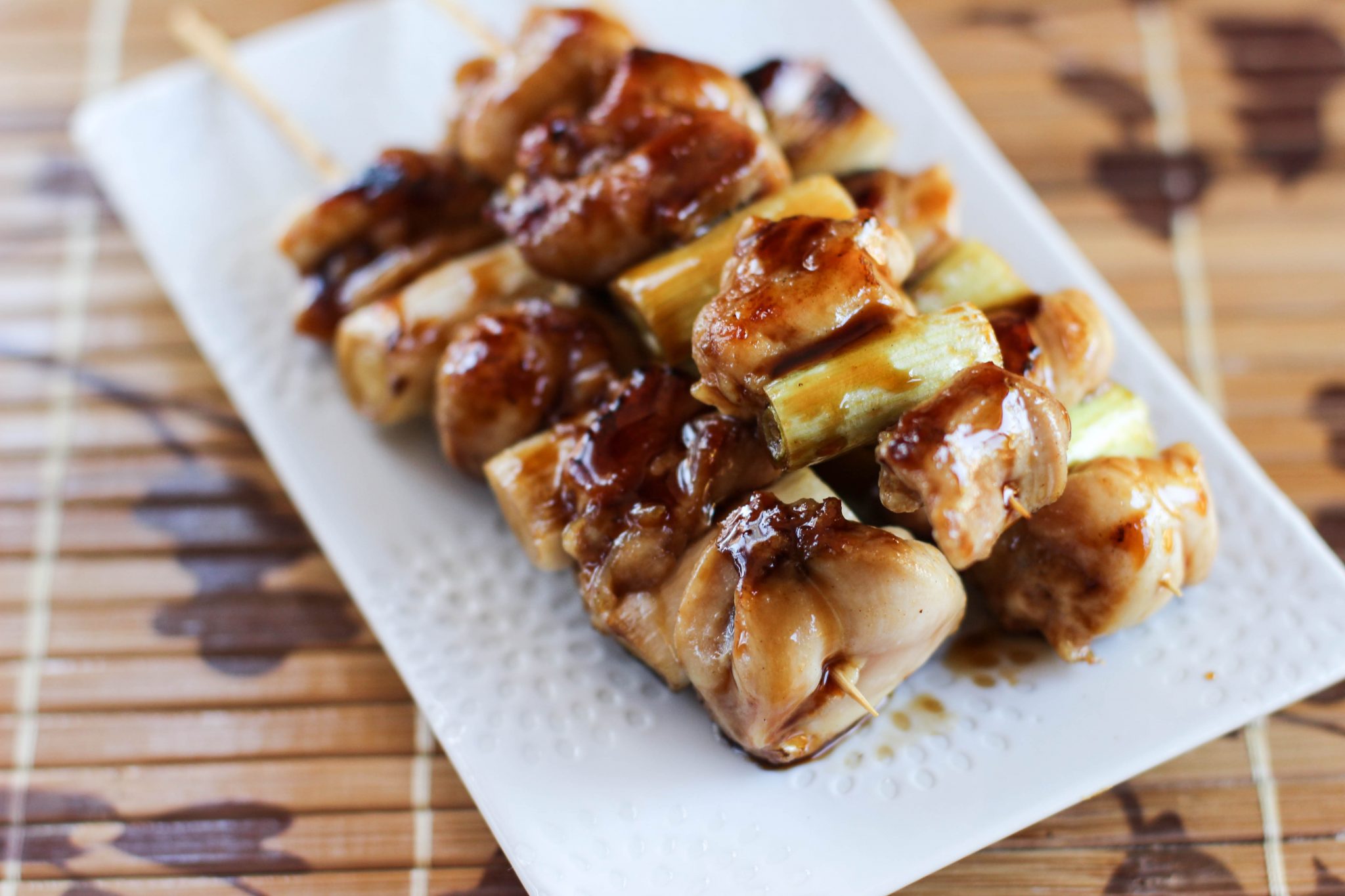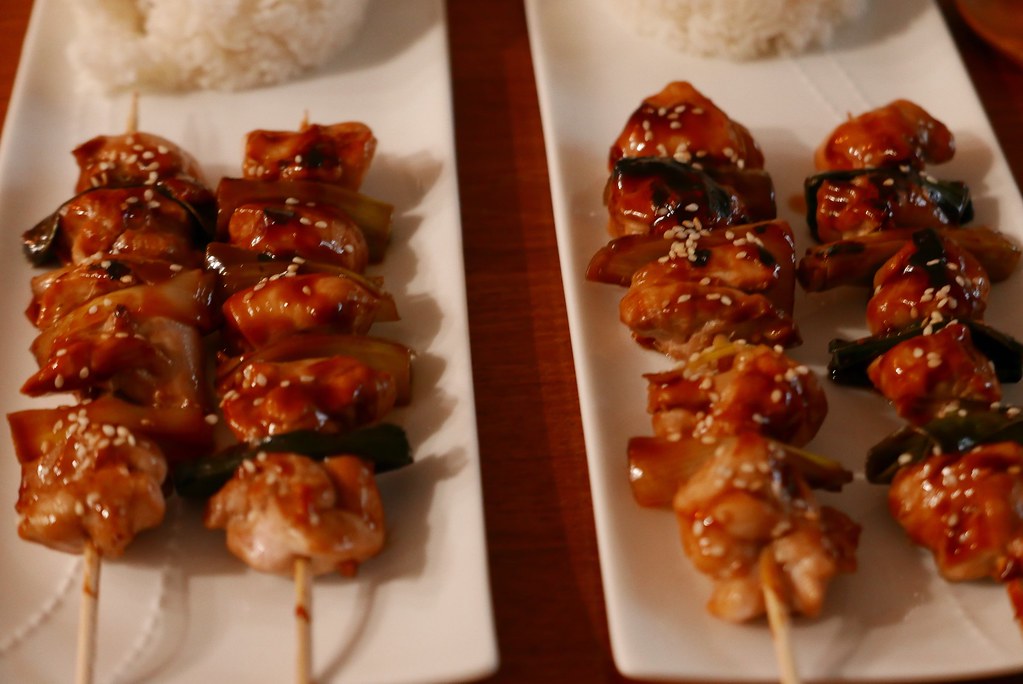Yakitori: A Culinary Journey Through Skewered Delights
Related Articles
- A Dive Into The Delicious World Of Shrimp Scampi: From Classic To Creative
- A Journey Into The Heart Of Indonesian Flavors: Exploring Pindang Serani
- A Pocketful Of Happiness: Exploring The World Of Polish Pierogi
- The Masala Dosa: A South Indian Journey Of Flavors
- A Journey Through The Flavorful World Of Otak-otak: From Humble Beginnings To Culinary Mastery
Introduction
Discover everything you need to know about Yakitori: A Culinary Journey Through Skewered Delights
Yakitori: A Culinary Journey Through Skewered Delights

Yakitori, the beloved Japanese street food, is more than just grilled chicken skewers. It’s a vibrant tapestry of flavors, textures, and culinary creativity, a testament to the Japanese mastery of simple ingredients and masterful cooking techniques. This article delves into the world of yakitori, exploring its history, the art of skewering, diverse flavor profiles, and essential tips for achieving yakitori perfection at home.
A Culinary History: From Humble Beginnings to Global Phenomenon
Yakitori’s origins can be traced back to the Edo period (1603-1868), a time when street vendors in Japan began selling grilled chicken skewers, a convenient and affordable food for the working class. This humble dish, initially made with leftover chicken parts, quickly gained popularity for its deliciousness and affordability. Over the centuries, yakitori evolved, incorporating diverse cuts of meat, seafood, and vegetables, with each region developing its own unique variations.
Today, yakitori is a culinary phenomenon, enjoyed in Japan and around the world. It’s a staple at festivals, izakayas (Japanese pubs), and upscale restaurants, its simple yet satisfying flavors captivating palates worldwide.
Mastering the Art of Skewering: A Culinary Symphony
Skewering is an art form in itself, influencing the cooking process and creating a beautiful presentation. The choice of skewers is crucial, with bamboo skewers being the traditional choice for their natural flavor and ability to withstand high heat. Metal skewers are also popular, offering durability and ease of cleaning.
The key to successful skewering lies in creating balanced and visually appealing skewers. Consider these factors:
- Variety: Combine different ingredients for a delightful interplay of textures and flavors. For instance, a skewer could feature succulent chicken, crisp bell peppers, and tender onions.
- Size: The size of the ingredients should be consistent for even cooking. Cut ingredients into bite-sized pieces to ensure they cook thoroughly and are easy to eat.
- Spacing: Leave adequate space between ingredients on the skewer to allow for even heat distribution and prevent overcrowding.
- Presentation: Arrange the ingredients on the skewer in an aesthetically pleasing way, creating visual appeal and enhancing the dining experience.

The Culinary Canvas: Unlocking Flavor Profiles
Yakitori offers a canvas for culinary creativity, allowing you to explore a wide range of flavor profiles. While chicken is the most common ingredient, the possibilities are endless, ranging from succulent seafood to vibrant vegetables.
1. Chicken: The Classic Canvas:
- Chicken Thighs: The most popular choice for yakitori, chicken thighs offer rich flavor and tender texture. They can be marinated in a variety of sauces or simply seasoned with salt and pepper.
- Chicken Hearts: A flavorful and slightly chewy option, chicken hearts are often marinated in a savory sauce and grilled to perfection.
- Chicken Skin: A crispy and flavorful delicacy, chicken skin is often grilled until golden brown and provides a satisfying textural contrast.
- Chicken Wings: Juicy and flavorful, chicken wings are often marinated and grilled, then served with a dipping sauce.
2. Seafood: A Symphony of Flavor:
- Salmon: Rich and fatty, salmon is often marinated in soy sauce and sake and grilled until flaky and tender.
- Shrimp: Tender and flavorful, shrimp are often skewered with vegetables and grilled until pink and juicy.
- Squid: Chewy and slightly sweet, squid is often marinated in a light sauce and grilled until tender.

3. Vegetables: A Vibrant Palette:
- Green Onions: Crisp and flavorful, green onions are often skewered with chicken or seafood and grilled until slightly charred.
- Bell Peppers: Sweet and juicy, bell peppers add a vibrant touch to yakitori skewers. They can be grilled whole or cut into strips.
- Shiitake Mushrooms: Earthy and savory, shiitake mushrooms are often grilled until tender and slightly smoky.
- Asparagus: Crisp and delicate, asparagus is often skewered with chicken or seafood and grilled until tender-crisp.
4. Beyond the Traditional:
- Pork Belly: Fatty and flavorful, pork belly is often marinated in a sweet and savory sauce and grilled until crispy.
- Tofu: Soft and absorbent, tofu can be marinated in a variety of sauces and grilled until golden brown.
- Wagyu Beef: Luxurious and flavorful, Wagyu beef is often skewered with vegetables and grilled until rare and tender.
The Art of Yakitori Sauce: A Symphony of Flavors
Yakitori sauce is a key ingredient in this culinary masterpiece, adding a rich, savory, and slightly sweet flavor to the grilled skewers. Traditionally, yakitori sauce is a blend of soy sauce, mirin (sweet rice wine), and sake (Japanese rice wine). However, the recipe can be modified to suit individual preferences, incorporating ingredients such as sugar, ginger, garlic, and spices.
1. The Traditional Approach:
- Soy Sauce: Provides a salty and savory base for the sauce.
- Mirin: Adds sweetness and a touch of depth to the flavor.
- Sake: Enhances the overall balance of the sauce and adds a subtle complexity.
2. Adding Depth and Complexity:
- Sugar: Adjusts the sweetness of the sauce, balancing the savory notes.
- Ginger: Adds a spicy and warming flavor to the sauce.
- Garlic: Enhances the savory profile and adds a pungent aroma.
- Spices: Experiment with spices like black pepper, chili flakes, or sesame seeds to add a touch of complexity.
3. The Importance of Reduction:
The key to a delicious yakitori sauce lies in reducing it over low heat. This process concentrates the flavors and creates a thick, glossy sauce that clings beautifully to the grilled skewers.
The Culinary Technique: Grilling to Perfection
Grilling is the heart of yakitori, transforming raw ingredients into flavorful and smoky delights. While a charcoal grill is ideal for achieving that signature smoky flavor, a gas grill or even a stovetop griddle can be used to create delicious yakitori at home.
1. Preparing the Grill:
- Preheat: Preheating the grill to medium-high heat is crucial for achieving a nice sear on the skewers.
- Clean and Oil: Clean the grill grates to prevent sticking and brush them lightly with oil to ensure even cooking.
2. Grilling Technique:
- Even Cooking: Turn the skewers frequently to ensure even cooking on all sides.
- Charring: Allow the skewers to char slightly for added flavor and a visually appealing finish.
- Doneness: Cook the skewers to your desired level of doneness, ensuring the meat is cooked through and the vegetables are tender.
3. Glaze and Garnish:
- Glazing: Brush the skewers with yakitori sauce towards the end of the grilling process to create a glossy finish and enhance the flavor.
- Garnish: Garnish the skewers with sliced green onions, sesame seeds, or a sprinkle of shichimi togarashi (Japanese seven-spice powder) for added flavor and visual appeal.
Culinary Tips for Yakitori Success
Mastering the art of yakitori requires attention to detail and a few key tips:
- Marination: Marinating the ingredients in a flavorful sauce beforehand enhances the flavor and tenderizes the meat.
- Seasoning: Season the skewers with salt and pepper before grilling to create a base of flavor.
- Temperature Control: Avoid overcooking the skewers, as this can lead to dryness.
- Resting Time: Let the skewers rest for a few minutes after grilling to allow the juices to redistribute.
- Presentation: Arrange the skewers on a platter and garnish them creatively to enhance the dining experience.
Beyond the Skewer: Exploring Yakitori Variations
While traditional yakitori skewers are a beloved classic, there are endless possibilities for exploring creative variations:
- Yakitori Donburi: A hearty and flavorful dish consisting of grilled yakitori skewers served over a bed of rice.
- Yakitori Udon: A comforting and savory noodle dish featuring yakitori skewers simmered in a flavorful broth with udon noodles.
- Yakitori Pizza: A fusion dish featuring yakitori ingredients and flavors on a pizza crust.
- Yakitori Salad: A refreshing and light salad featuring grilled yakitori skewers, fresh vegetables, and a light dressing.
Conclusion: A Culinary Journey Continues
Yakitori is more than just a dish; it’s a culinary journey that invites you to explore diverse flavors, textures, and cooking techniques. Whether you’re a seasoned chef or a culinary novice, yakitori offers a rewarding experience, allowing you to create delicious and satisfying meals that will delight your taste buds. So, gather your ingredients, fire up the grill, and embark on your own yakitori adventure!
Closure
Thank you for reading! Stay with us for more insights on Yakitori: A Culinary Journey Through Skewered Delights.
Don’t forget to check back for the latest news and updates on Yakitori: A Culinary Journey Through Skewered Delights!
We’d love to hear your thoughts about Yakitori: A Culinary Journey Through Skewered Delights—leave your comments below!
Stay informed with our next updates on Yakitori: A Culinary Journey Through Skewered Delights and other exciting topics.





